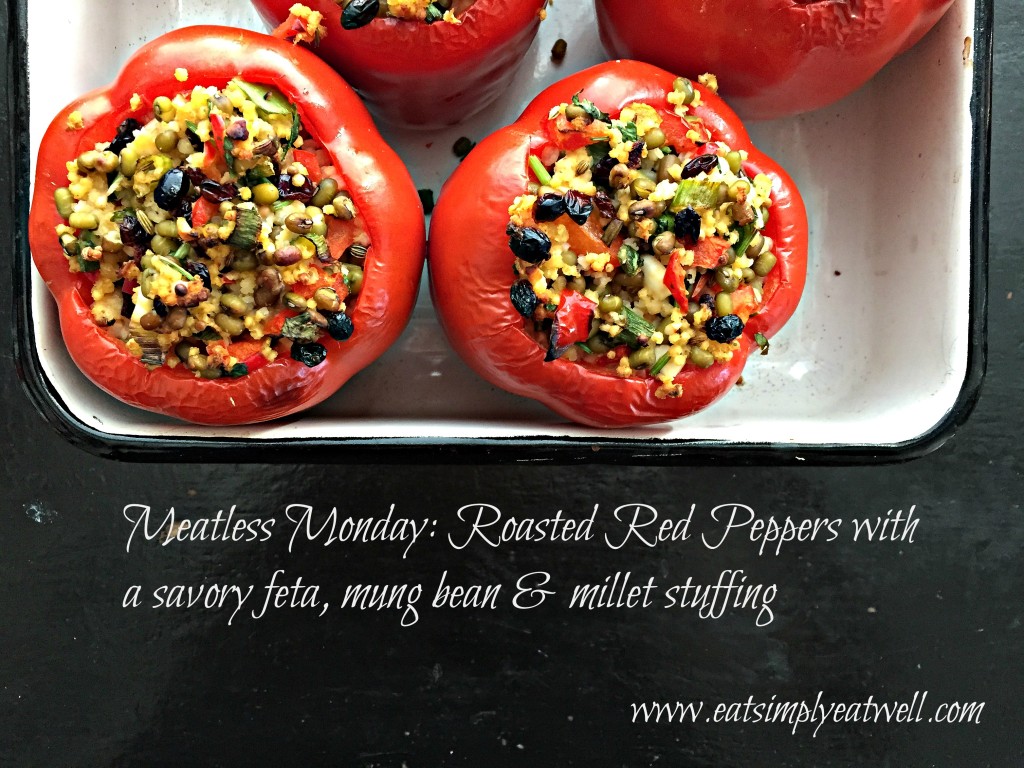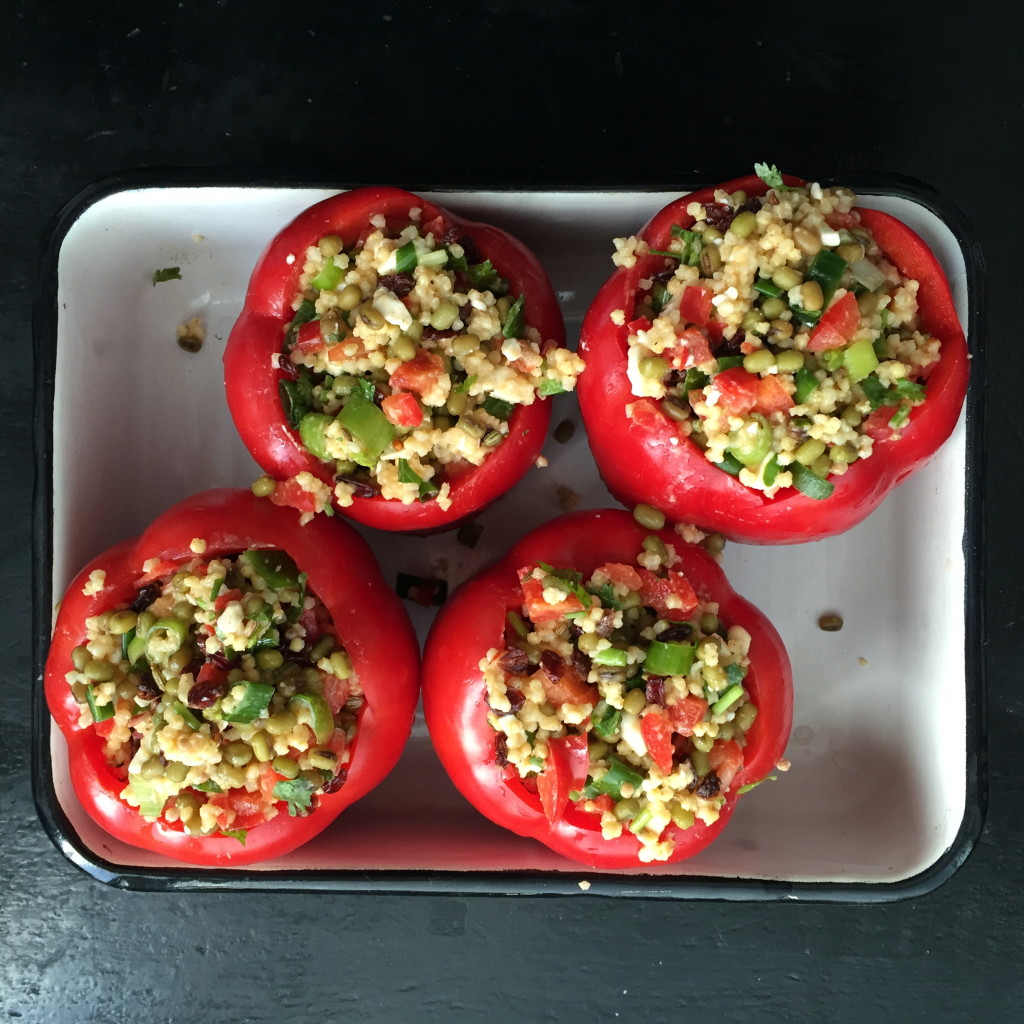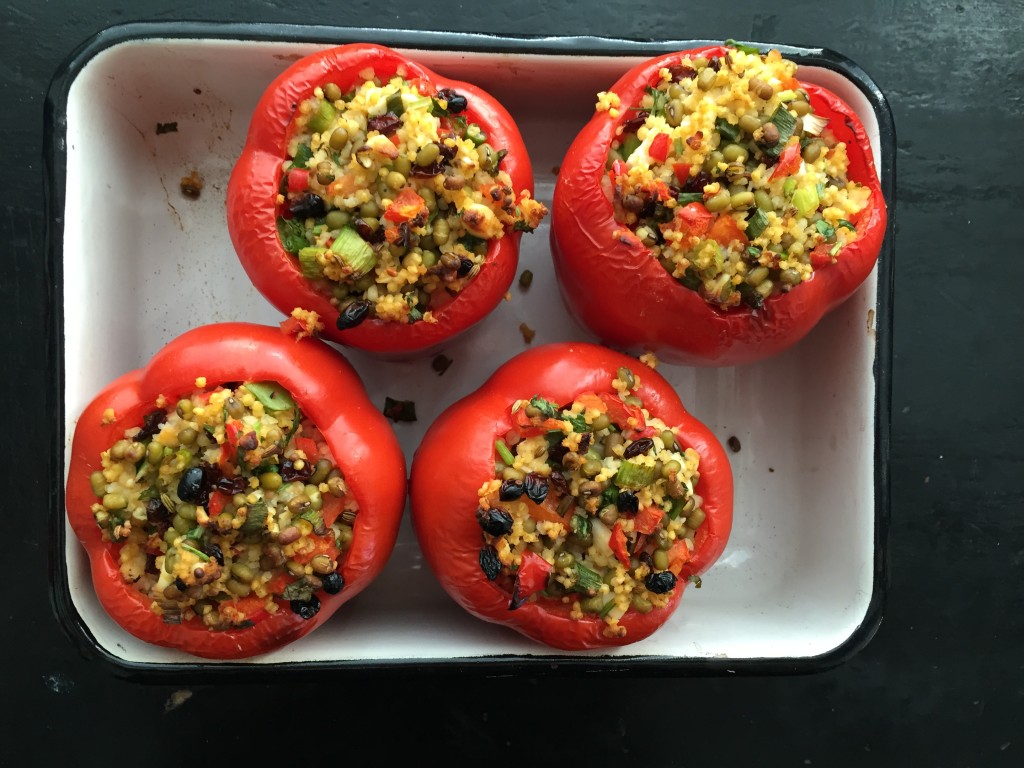More and more every day: I believe food matters. I believe food is medicine. As Hippocrates said so many years ago: “let food be thy medicine and let medicine be thy food.”
The wisdom of this short instruction rings truer than ever, now.
I have found that as I have shifted my own diet to shun junk food and processed food and “food-like substances” (a Michael Pollan phrase) and moved down a path toward cooking with and eating whole foods and real foods, something very interesting has happened. I don’t crave candy, at all. I find myself reducing the quantity of sugar called for in recipes because overly sweet stuff simply doesn’t taste good anymore. As I incorporate more and more plant-based recipes in my diet, too much meat makes me feel full and sluggish. I crave vegetables. A morning that doesn’t start with a big green smoothie (or a smoothie containing a lot of vegetables + some fruit, but not green) is a morning that feels a bit off. My body is more in tune than ever with what good food is, and I’ve never felt better in my life. I indulge sometimes: dark chocolate, cookies and cakes that use healthy ingredient alternatives are still part of my diet, and I’m happy to keep it that way
Yes, food matters, and it does change everything. Why does it matter so much? Does it matter to you, or just to me? What difference does it make to anyone else what choices I make, or what’s available in the grocery store, restaurant, office cafes, school cafeterias, local corner shop, or farmer’s market? It turns out that increasingly, the politics and economics of food are getting closer and closer to our doorsteps every day, no matter where we live. The World Economic Forum published its latest report listing the top 10 risks for global economy and safety: Global Risks Report 2015, and topping the list or risks most likely to happen was this: Water Crises.
A year ago in February 2014, I was in California for a conference, and because I was on Finnish time still, rose every morning around 4:00 AM, long before my hotel was serving breakfast. But one thing about America is that there is always a Starbucks open somewhere; the nearest one opened at 4:30 AM. So I wandered on down each morning, ordered my triple grande with-room Americano and a bowl of oatmeal with honey, nuts and a pile of blueberries, and settled in to read the morning paper and chat with the locals. Both the papers and the people told the same stories. The San Francisco Chronicle talked about the problems the drought, then 3 years running, was having for the local farmers, making food harder to grow and thereby more expensive. One local couple told me that they’d begun a new routine: they’d placed a large tub in their shower. They’d turn the shower on quickly to get wet, turn it off to soap up, turn it on again just long enough to rinse off the suds, and then use the resulting water to flush the toilet. Back in my hotel room, I tried the same shower trick, minus the saving of the water for toilet flushing. It felt strange; it wasn’t easy; and it was very different from my normal showering routine where the water typically flows the entire time. Living in Finland where there still appears to be more than enough water to go around, the threat of water crises locally hardly ever enters into the conversation, much less impacts daily behaviors. It may be that we’ll all be forced to change our habits, soon.
This year, the drought is in its fourth year in California. Foods we know and love and have come to crave because of their wonderful flavors and health benefits are at risk, including something I include in my breakfast every morning: avocados. Mine don’t come from California; but that’s not the point. The point is, climate change is a fact, and on the World Economic Forum’s list of risks, high up there in 4th place this year was another challenge: the impact of the failure of the world to respond to climate change – one of the factors causing the drought in California; the dry period in Brazil impacting the availability and therefore price of coffee (that Starbucks coffee I enjoyed in California could get even more expensive); the floods in other parts of the world.
There is arguably no industry more vulnerable to the dual threat of climate change and water crises than the food and beverage industry. It takes a lot of water to grow or raise the food that lands on our plates, and as the Huffington post points out, avocados aren’t the only thing at risk. Almonds, alfalfa and chickpeas are all vegetable favorites that require hefty amounts of water, and there’s less and less of it to go around. However, it’s prudent to point out here that no food comes close to beef when it comes to water usage. While your creamy avocado requires a little more than 9 gallons per ounce, beef requires a staggering 106 gallons per ounce. So that quarter pounder you’ve just tossed on the grill? That represents 424 gallons of water (see here and here for the full view).
Part of the problem on a local level is due to poor agricultural practices that support monocultural farming, heavy pesticide use and industrial farming methods; but also the world’s dependence on fossil fuels – the very stuff used to farm the fields growing our crops, fueling the trucks, planes and boats that get those crops from field to market; fueling our cars when we go to said market to pick them up, and in many parts of the world, fueling the stove upon which we cook the food (see this article about oil fracking, water usage and the impact on drought). Even more, it’s due to the fact that world’s consumers are consuming more than ever of everything, especially meat. It’s not just beef, either – more pork, poultry and lamb are being consumed as well. The vast majority of it is raised in an industrial way – raising the question of the quality of the meat as well. That is a different discussion than the one at hand, but if you are interested, you can read more here and here. In truth, it’s hard to point the finger at any one factor because it’s a myriad of factors and behaviors that have led us to this place.
If the problem starts at a local level and spreads globally, where are we to begin to solve it? We all need to eat, right? Yes.
I would argue that we begin to solve it right where we are. But here’s the thing: we are talking about two distinct but related problems: the impact of food choices on our health; and the impact of food choices on the environment. Both subjects are confusing. Both are filled with conflicting information, where different people spout strong arguments that completely oppose the other leaving the rest of us confused about whether we have the power to do anything about it.
Yes, we do.
We can start small. We start with small actions that help both our bodies and our planet: eat more plants, and eat less but better meat and very little if any processed food. Bonus points if those plants come from your own garden.
Joining in on the fun of Meatless Monday is one way to begin. The idea is that every Monday, you leave meat off of the menu. Once you start delving into the wonderful and wild world of vegetables, you may just find that they are so much more interesting than meat, that your body actually begins to crave them when you’ve gone to long without. After a big meat-filled sandwich, a few slices of pizza or a hunk of meat, you may find yourself dreaming of salads, or roasted eggplant, or today’s Eat Simply Eat Well recipe: Stuffed Roasted Red Peppers.
This is a beautiful dish and easy to make. In fact, you can prepare the dish in advance, refrigerate it, and then cook it the next day. It’s important to use organic red peppers if you can find them as they are on the Dirty Dozen list of plants with the highest levels of pesticides, but is a delicious vegetable, particularly when roasted, and a good source of lycopene, carotene, vitamin C, vitamin B5, vitamin A and folate. To make them last, make sure you store them properly. The Chew The World blog has a great article on How to Store Red Peppers with tips on how to do this right to get the most out of them. Take a look!
Mung beans are highly nutritious, a great source of protein, and don’t need soaking like some other beans do. Millet is a wonderfully nutritious whole food that is a source of copper, phospherous, manganese and magnesium. Cilantro is delicious and provides vitamins K, C and A. Goat cheese adds a delicious, salty, tang, but can be left out if you are vegan.
Stuffed and Roasted Red Peppers
- 4 large, organic red peppers (or yellow if you prefer)
- 1/2 cup mung beans
- 1/2 cup dry millet
- 1 1/2 teaspoon salt, divided
- 1 tablespoon coconut oil
- 1 teaspoon fennel seeds
- 1 teaspoon mustard seeds
- 2 cloves garlic, minced
- 3 spring onions, thinly sliced
- 2 tablespoons barberries or currants
- 100 g feta cheese cut into small pieces
- juice of 1/2 lemon
- 1/4 cup packed cilantro (1 bunch) leaves and stems chopped
Preheat oven to 200°C/400°F.
Put mung beans into a pot, cover with water and bring to a boil. Add 1/2 teaspoon of salt, reduce to a simmer, cover with lid, and cook for 25 minutes. Drain; add to the bowl the remaining ingredients.
Put millet into a pot, cover with water and bring to a boil. Add 1/2 teaspoon of salt, reduce to a simmer, cover with lid, and cook for 10 minutes. Remove from heat, drain, rinse, and pour into large mixing bowl.
Cut a thin slice off of the bottom of each of the peppers to create a stable platform. Cut out the stem and remove the seeds. Lightly salt the inside of each pepper. Dice the edible parts that you have cut away and add them to the bowl of stuffing mix.
Melt coconut oil in a small, heavy-bottomed pan. Toast fennel and mustard seeds until the seeds brown and begin to pop. Pour into the bowl with the millet. Add the cilantro, green onions, feta, lemon juice, barberries or currants and remaining 1/2 teaspoon salt. Add the mung beans once they are cooked. Add any red pepper dice. Mix well to combine. Taste; add more salt if necessary.
Divide the stuffing evenly between the four peppers. Place on a parchment lined baking tray and put the tray in the oven. Bake for 30 – 40 minutes or until the peppers are soft and begin to blacken slightly.
Serves 4


